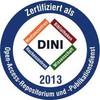Preview |
PDF, English
- main document
Download (14MB) | Terms of use |
Abstract
Sexual reproduction plays a central part in life and evolution, as it allows the transmission of genetic information across generations. As the offspring is generated from gametes of both parents, sexual reproduction is a source for diversity within a population. The gametes are formed through gametogenesis of the germ line, in a process which can generally be divided into three phases: 1) Mitotic expansion of the progenitor pool. 2) Meiotic reductive divisions. 3) Post-meiotic changes. For males this takes place in the testis and generates sperm, while in females this process takes place in the ovary and generates oocytes. From an evolutionary perspective, especially the testis is an interesting tissue, as it has been shown to evolve rapidly both morphologically as well as molecularly. Yet, so far it was not fully dissected, which cells are the driver of this observation. In my thesis work, I address this question in adult testis on the basis of single cell level transcriptional data from 11 species covering the three main mammalian lineages (monotremes, marsupials, and eutherians) and a bird. Among the mammalian species are seven primates, including all extant great apes, except for Orangutan. To also further our understanding of the female germline evolution, I also analyzed a dataset of single cell level transcriptional data of developing ovaries for three glires and a bird. In these analyses, I show how we dissected the testicular cell type transcriptomes. We found that the fast divergence of the testis is especially driven by the post-meiotic cell types. Furthermore, we showed that this fast divergence is driven by both a relaxation of negative selection, as well as an increase of positive selection. In addition, we found support for the notion of the “out of the testis” hypothesis, according to which the testis plays an important role in the origin of new genes. Through assessing the expression dynamics of individual genes, we found shared and lineage specific aspects of the transcriptome. In this analysis we identified a core set of genes, which maintained their expression across mammalian evolution and is likely connected to central testicular function and furthermore connected to maintenance of fertility. In the analysis of lineage specific expression patterns, we also found genes with relevance for fertility. Tracing the functional impact of individual genes, we also found conserved aspects of Sertoli cell to germ cell communication. Specifically focusing on the analysis of sex chromosome expression, we found an accumulation of testis specific X-linked genes in spermatogonia. Furthermore, we dissected the transcriptomal differences between the X- and Y-carrying spermatids. In addition to this, we assessed the silencing of sex chromosomes upon meiotic entry and showed, for the first time transcriptomal evidence for meiotic sex chromosome inactivation (MSCI) in platypus. In the analysis of the developmental ovary dataset I generated, I identified the basic somatic cell types. In the assessment of the germ cells I found, that I could not clearly distinguish multiple subtypes of germ cells in the mammalian data. In the bird data I was able to distinguish germ cell subtypes. Analyzing the cell type transcriptomes in this dataset, I found that germ cells diverge faster than somatic cells. In the dedicated analysis of the bird germ line transcriptomes in regards to sex chromosome expression, I found support for the presence of MSCI in birds. Taken together my work helps to explain the observed diversity in testicular phenotypes and explain their molecular sources. For the ovary, my data provides an exciting starting step for further exploration.
| Document type: | Dissertation |
|---|---|
| Supervisor: | Kaessmann, Prof. Dr. Henrik |
| Place of Publication: | Heidelberg |
| Date of thesis defense: | 30 June 2025 |
| Date Deposited: | 09 Sep 2025 10:19 |
| Date: | 2025 |
| Faculties / Institutes: | The Faculty of Bio Sciences > Dean's Office of the Faculty of Bio Sciences |
| Controlled Keywords: | Evolution |
| Uncontrolled Keywords: | Testis, Reproduction, Sperm competition |









